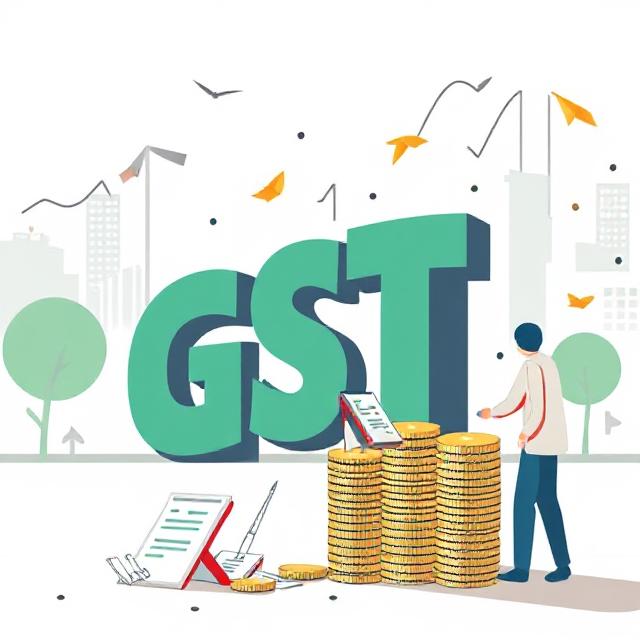NextGen GST Reforms in India 2025: Complete Guide to 56th GST Council Decisions
Introduction: A Turning Point in India’s GST Journey
The Goods and Services Tax (GST), launched in July 2017, has been one of India’s biggest tax reforms in independent history. Its primary goal was to simplify India’s complex indirect tax structure and create a “One Nation, One Tax” regime.
Over the past eight years, GST has undergone multiple revisions, but the 56th GST Council Meeting in 2025 has been described as a watershed moment, introducing sweeping changes now referred to as NextGen GST or GST 2.0.
From zero tax on health and life insurance to reduced rates on food, agriculture, automobiles, education, housing, and exports, this reform is designed to ease household budgets, boost economic demand, and align with India’s $5 trillion economy goal. At the same time, luxury goods and cigarettes have seen tax hikes from 28% to 40%, balancing the revenue equation.
This guide explains the NextGen GST reforms sector by sector, their impact on households, industries, and the economy, as well as answers to the most common questions consumers and businesses may have.
Key Highlights of NextGen GST (56th GST Council)
Here’s a summary of the most important changes:
- 0% GST on Individual Health & Life Insurance Policies (Term, ULIP, Endowment).
- 0% GST on Health Insurance Premiums (down from 18%).
- 5% GST on Agriculture Machinery, Tractors, Tractor Tyres, Irrigation Systems (down from 12%).
- 5% GST on Butter, Ghee, Cheese, Namkeens & Baby Essentials (down from 12%).
- 0% GST on Chapati, Roti, Khakra, Paratha, UHT Milk, and Indian Breads.
- 18% GST on Hybrid Cars, Bikes ≤ 350 CC, and Three-Wheelers (down from 28%).
- 18% GST on ACs, Large TVs, Projectors, Dishwashers (down from 28%).
- 0% GST on Educational Essentials – Pencils, Crayons, Maps, Charts, Globes.
- GST refunds extended to low-value export consignments.
- Relief for mid-size housing projects with rationalized GST.
- Luxury Goods GST increased from 28% to 40%.
- Cigarettes & Tobacco GST increased from 28% to 40% + cess.
Sector-Wise GST Reforms and Their Impact
1. Food & Dairy Products – Household Relief
Food is central to every Indian household’s budget. The council announced dramatic reductions:
- 0% GST on Chapati, Roti, Khakra & Indian Breads.
- 0% GST on Paratha, Parotta (down from 18%).
- 0% GST on UHT Milk (down from 5%).
- 5% GST on Butter, Ghee, Cheese, Dairy Spreads (down from 12%).
- 5% GST on Packaged Namkeens, Bhujia, Mixtures (down from 12%).
💡 Impact: Direct savings on everyday food items, benefiting the middle class and encouraging growth in the FMCG and dairy sectors.
2. Agriculture & Rural Economy – Empowering Farmers
For rural India, farming equipment has become more affordable:
- 5% GST on Tractors, Tractor Tyres, Drip Irrigation, Sprinklers (down from 12%).
- 5% GST on Agricultural Machinery & Equipment.
💡 Impact: Lower farm input costs, higher adoption of mechanization, boost to irrigation, stronger rural demand.
3. Healthcare & Insurance – A Revolutionary Move
The biggest household relief came in insurance and healthcare:
- 0% GST on Individual Health Insurance Premiums (down from 18%).
- 0% GST on Life Insurance Policies – Term, ULIP, Endowment.
- 5% GST on Medical Oxygen, Diagnostic Kits, Glucometers, Test Strips.
💡 Impact: Insurance becomes more affordable, encouraging wider coverage and supporting India’s goal of universal health care.
4. Automobiles & Mobility – Middle-Class Friendly
The automobile sector saw rationalized rates:
- 18% GST on Hybrid Cars (earlier 28%). Applies to <1200cc petrol and <1500cc diesel vehicles under 4000 mm length.
- 5% GST on Bikes ≤ 350 CC (down from 12%).
- 18% GST on Three-Wheelers & Transport Vehicles (down from 28%).
💡 Impact: Boosts middle-class vehicle purchases, supports hybrid adoption, and strengthens India’s green mobility drive.
5. Housing & Real Estate – Relief for Homebuyers
- GST rationalization for mid-size housing projects makes property purchases more affordable.
💡 Impact: Stimulates demand in the real estate sector, especially for affordable and mid-size housing.
6. Electronics & Consumer Durables – Reduced Burden
- 18% GST on ACs, TVs above 32 inches, Dishwashers, Projectors (down from 28%).
💡 Impact: Big-ticket appliances become affordable, supporting Make in India manufacturing and encouraging middle-class consumption.
7. Education & Children’s Essentials – Building the Future
- 0% GST on Maps, Charts, Globes, Pencils, Sharpeners, Crayons, Pastels.
- 5% GST on Feeding Bottles, Baby Diapers, Napkins.
💡 Impact: Relief for parents, reduced education costs, encouragement of learning and literacy.
8. Exports – Supporting Global Competitiveness
- GST refunds extended to low-value export consignments.
💡 Impact: Boosts small exporters, improves competitiveness in global trade, particularly for SMEs.
9. Luxury Goods, Cigarettes & Sin Products – Heavier Tax Burden
Unlike essentials, the council made luxury and sin products costlier:
- Luxury Goods: GST increased from 28% to 40% with cess on luxury cars, designer imports, and high-end consumer durables.
- Cigarettes & Tobacco Products: GST increased from 28% to 40% + cess, keeping them the most heavily taxed goods in India.
- Alcohol: Remains outside GST, taxed under state excise.
💡 Impact: Luxury consumption becomes costlier, tobacco use further discouraged, and government revenue compensated.
Economic Impact of NextGen GST
The SBI report estimates a revenue loss of ₹3,700 crore due to tax reductions. However:
- Consumers → Lower daily expenses, more disposable income, increased consumption.
- Industries → FMCG, healthcare, automobiles, and housing to gain demand momentum.
- Exports → More competitive pricing globally.
- Government → Balances revenue loss by hiking taxes on luxury and tobacco goods.
💡 Long-Term Impact: Higher GDP growth, stronger middle-class spending, wider insurance coverage, and formalized FMCG/agriculture sectors.
Winners and Losers of NextGen GST
Winners:
- Households → Cheaper food, insurance, education, and health services.
- FMCG & Dairy → Higher demand growth.
- Auto Industry → Boost in hybrid cars and affordable two-wheelers.
- Real Estate → More mid-size housing demand.
- Healthcare → Wider insurance adoption.
Losers:
- Luxury Consumers → Cars, designer goods, electronics costlier with 40% GST.
- Tobacco Industry → Higher taxes discourage sales.
- Government Revenue → Faces short-term loss until consumption boosts recovery.
FAQs on NextGen GST
Q1: What is NextGen GST?
It is the reform package announced in the 56th GST Council meeting, rationalizing rates to make essentials cheaper while raising taxes on luxury/sin goods.
Q2: How has GST changed for insurance policies?
All individual health and life insurance policies are now exempt from GST, reducing premium costs by 18%.
Q3: What food items are exempt from GST?
Chapati, roti, khakra, paratha, parotta, and UHT milk are now taxed at 0% GST.
Q4: What are the new GST rates on automobiles?
Hybrids → 18%, Small bikes (≤350cc) → 5%, Three-wheelers → 18%.
Q5: Are luxury goods cheaper now?
No. Luxury goods now attract 40% GST, up from 28%.
Q6: What is the GST rate on cigarettes?
Cigarettes and tobacco products are taxed at 40% + cess, increased from 28%.
Q7: How will these reforms affect the economy?
Short-term government revenue loss, but stronger long-term growth through consumption and affordability.
Future Outlook of GST
The reforms pave the way for:
- Transition towards a three-slab GST system (0%, 5%, 18%).
- Possible inclusion of petroleum products under GST in the future.
- More digitization and faster refunds for exporters.
- Greater focus on green economy and sustainable goods with favorable tax rates.
Conclusion
The 56th GST Council meeting (2025) marks a historic shift towards NextGen GST, balancing affordability for households with revenue from luxury and sin goods.
- Middle class: Direct savings on food, healthcare, housing, and insurance.
- Farmers: Cheaper equipment and irrigation support.
- Industries: Boosted demand in FMCG, automobiles, and housing.
- Government: Maintains fiscal balance through higher luxury and tobacco taxation.
In short, NextGen GST is designed to fuel India’s growth story while protecting consumers’ wallets.
Disclaimer
This article is for informational purposes only. GST rates and reforms are subject to official government notifications. For professional or business-related advice, consult a registered GST practitioner.












